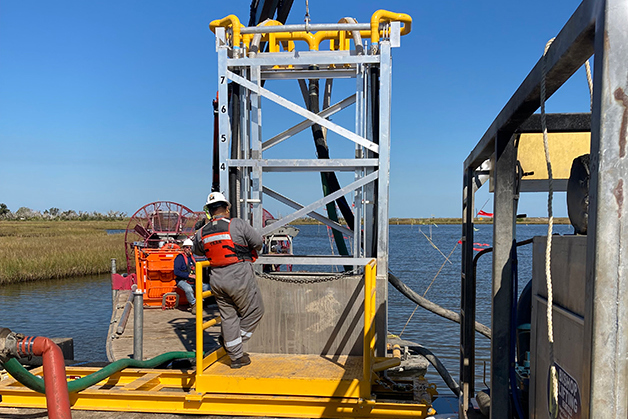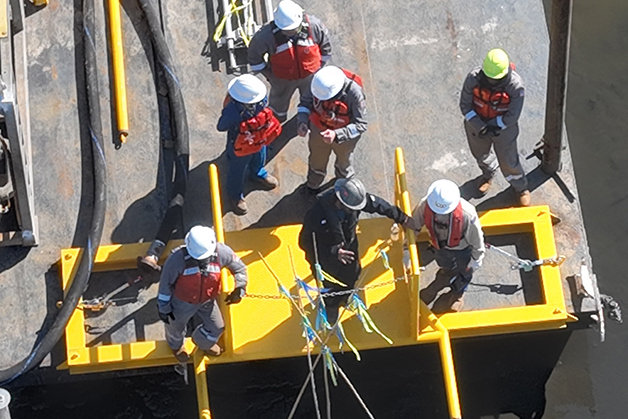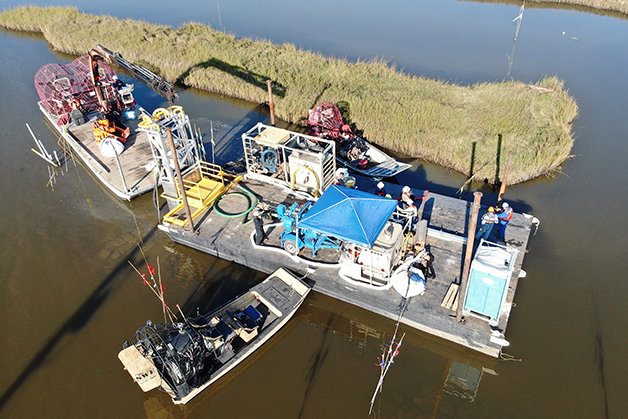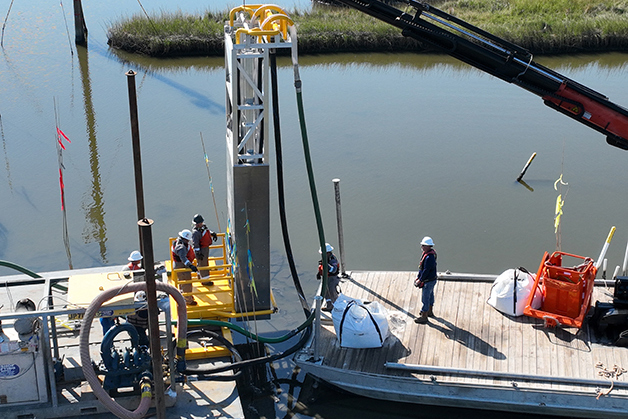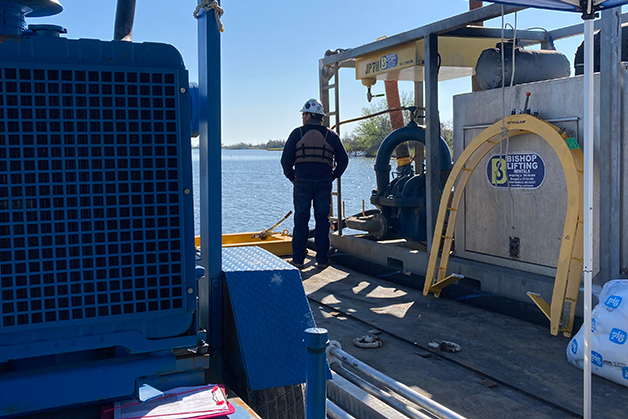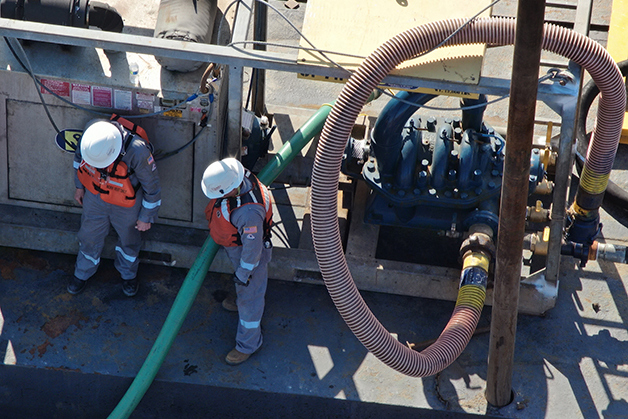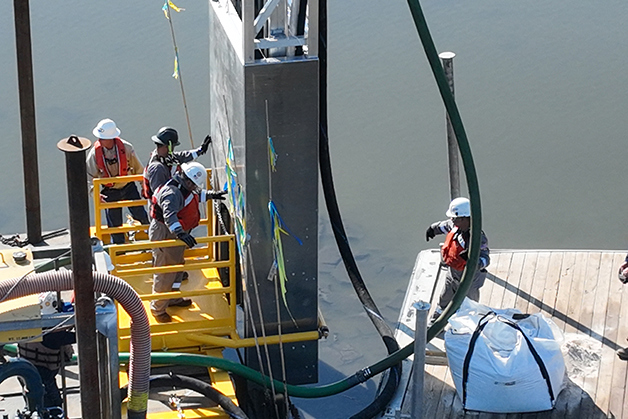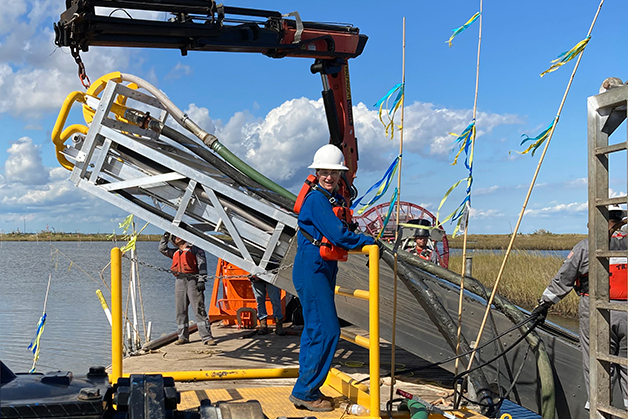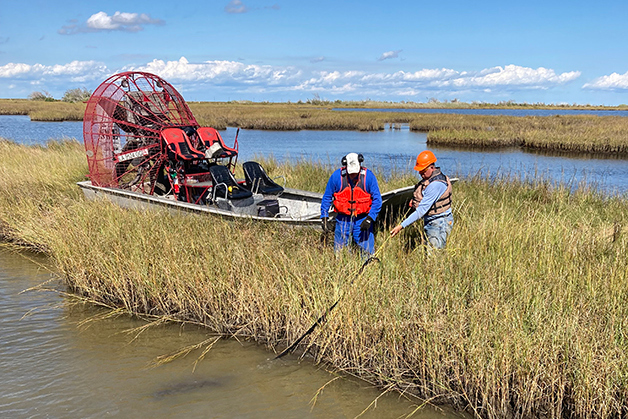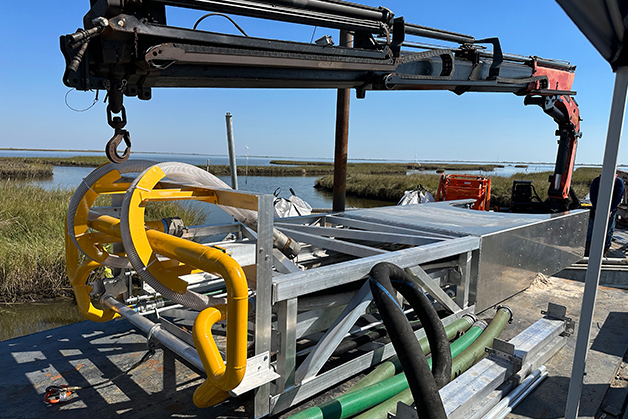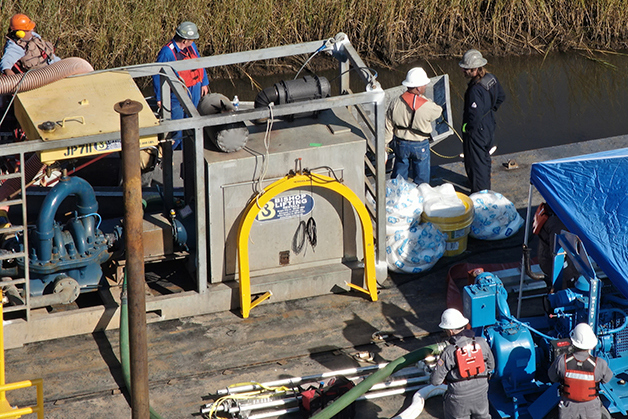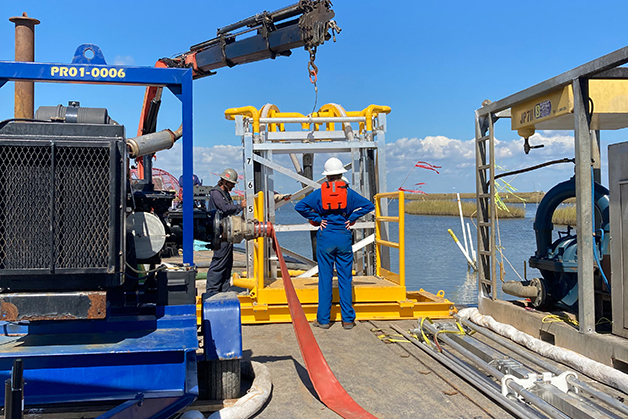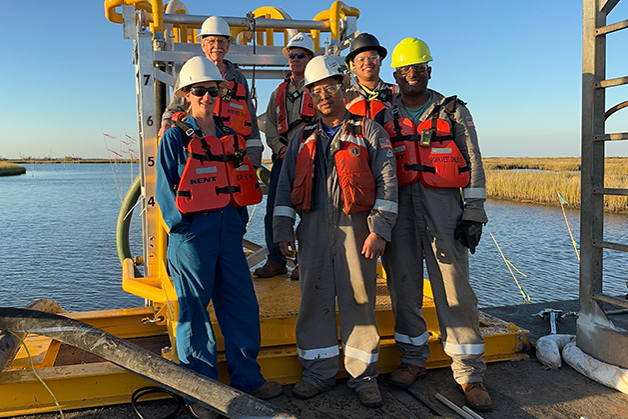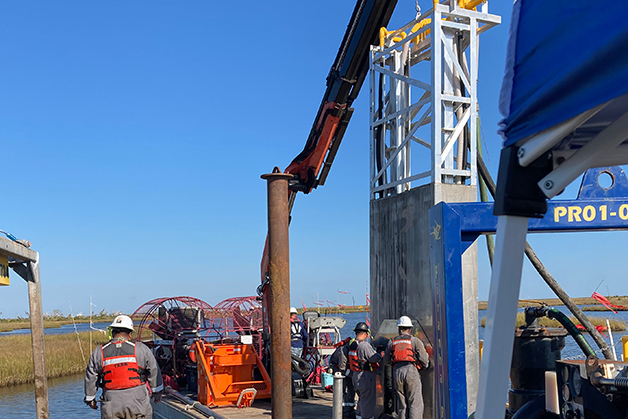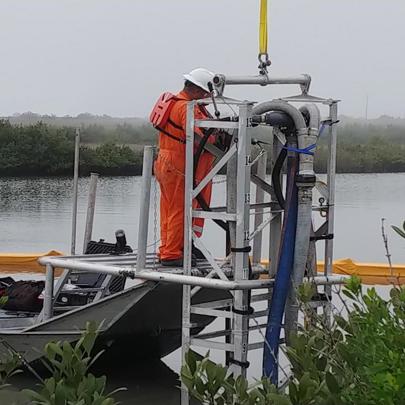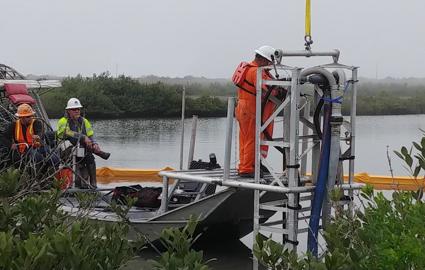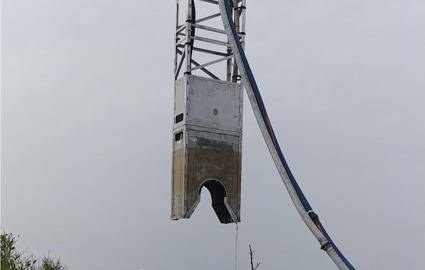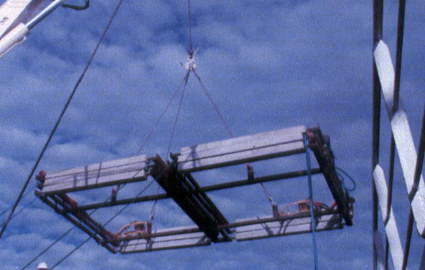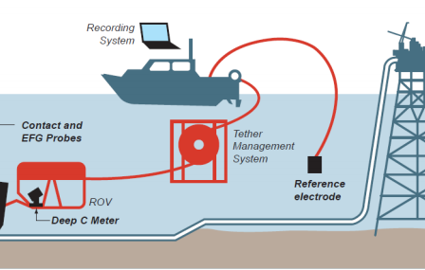PET™ excavation and clamp installation
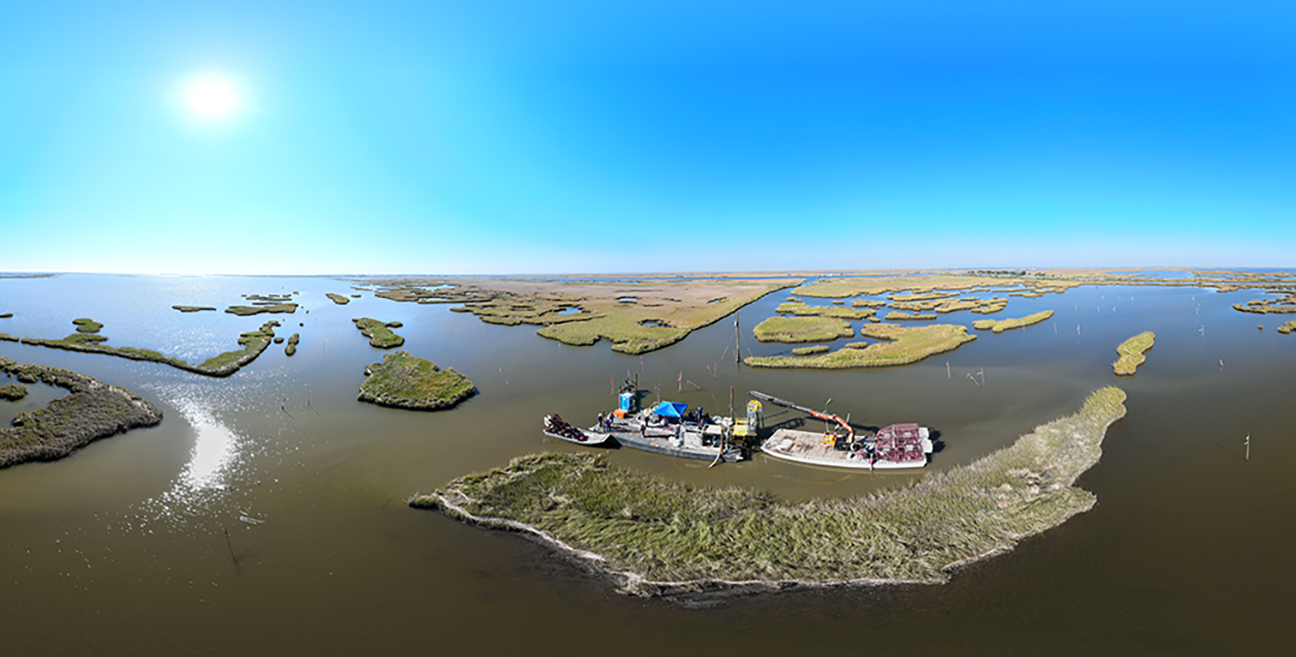
Here's a video of this case study
Two RetroClamps™ installed using Pipeline Excavation Tool (PET™)
Deepwater was contracted to place two large RetroClamps™ on two pipelines running alongside one another in a single trench in very shallow water located in the coastal wetlands of southern Louisiana. The operator was experiencing low CP readings in the area and had decided to install a new ground bed with the RetroClamps™ providing the negative.
Both pipes were under a half-foot to one-and-a-half feet of water, and the 48” main oil line was beneath an additional 6 feet of mud while the adjacent 30” brine line was under 4’ to 5’ of mud.
Rather than utilizing divers to dig an access hole to place the clamps, the operator elected to utilize Deepwater’s Pipeline Excavation Tool (PET™) to quickly remove the mud cover. The PET™ uses pumps to liquify and remove the mud cover as it’s lowered onto the pipeline, and the RetroClamp™ is then placed and electrically connected to the pipe.
The 48” main oil line had a concrete weight coat of 6” but required only a 49” RetroClamp™ because it was mounted at the girth weld where there was no CWC. The 30” brine line had an estimated concrete weight coat of 4”, so a 39” RetroClamp™ was used. Our ACTEON colleagues at Claxton provided the water-blasting equipment used to cut a 3" hole on the brine line's concrete covering to allow the RetroClamp's concrete-weight-coat-piercing tip to penetrate sufficiently. This quick operation was all done topside with access from the top of the PET™.
Once in place, the PET™ excavated 5 to 6 feet of mud in two hours. The clamps took an additional 30 minutes to an hour to install.
The PET™ performed extremely well, and the total time for setup and excavation was two-and-a-half days.
